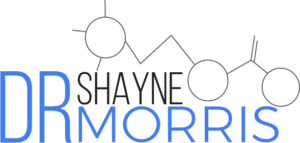SARS-CoV-2 may exploit our autoimmune issues through inflammatory mechanisms. After spending considerable time in the literature some interesting correlations exist, although, for discussion here, I would like to mention age as a risk factor separately from the underlying conditions and comorbidities like heart disease, diabetes, pulmonary disease and obesity. Age risk factors are listed in table 1, where you might notice that the fatality rates related to age groups, are uniquely telling. In contrast to many viral infections that put younger populations at risk, SARS-CoV-2 appears to be quite different in that its greatest impact appears to be on the older populations. Nevertheless, it is important to note that since the total number of COVID-19 cases remains unknown, the fatality rates are skewed. It is expected that we will have a more accurate picture as more statistical information comes in. A higher priority is our understanding of the underlying immunological risk factors.
Table 1. United States: Hospitalization, intensive care unit (ICU) admission, and case–fatality percentages for reported COVID–19 cases, by age group —United States, February 12–March 16, 2020.
| Age group in yrs (no. of cases) | Hospitalization % | ICU Admission % | Case Fatality % |
|---|---|---|---|
| 0-19 (123) | 1.6-2.5 | 0 | 0 |
| 20-44 (705) | 14.3-20.8 | 2.0-4.2 | 0.1-0.2 |
| 45-54 (429) | 21.2-28.3 | 5.4-10.4 | 0.5-0.8 |
| 55-64 (429) | 20.5-30.1 | 4.7-11.2 | 1.4-2.6 |
| 65-74 (409) | 28.6-43.5 | 8.1-18.8 | 2.7-4.9 |
| 75-84 (210) | 30.5-58.7 | 10.5-31.0 | 4.3-10.5 |
| ≥85 (144) | 31.3-70.3 | 6.3-29.0 | 10.4-27.3 |
| Total (2,449) | 20.7-31.4 | 4.9-11.5 | 1.8-3.4 |
*The CDC has a broad estimated fatality risk range of 0.25%–3.0% for COVID-19, while saying that “lower estimates might be closest to the true value”
First, this means more testing because COVID-19 can look a lot like other illnesses or remain asymptomatic. Testing also tracks infectious rates, lethality, differential infectivity, identifies carriers and allows us to project more accurate outcomes. Perhaps most importantly, testing identifies those people who need to be isolated. Clinical reviews of mild cases were found to have an early viral clearance, with 90% of these patients repeatedly testing negative by day 10 post-onset. In contrast, all severe cases still tested positive at or beyond day 10 post-onset. This means the viral load of severe cases was around 60 times higher than that of mild cases, suggesting that critically ill people are not clearing the viral load.
Analysis of the critically ill cases of COVID-19 has been startling and has led researchers to identify comorbidities, (see Table 2), related to critically infected COVID-19 patients. Professor Micheal Osterholm, director of the Center for Infectious Disease Research and Policy (CIDRAP), predicted the obesity risk factor before SARS-CoV-2 had reached the United States. His hypothesis was based on the similar inflammatory physiology of obesity to smokers, who were a high risk group in China. In fact, research on critically ill patients in Kirkland, WA, have identified the highest risk characteristics including: pulmonary disease, diabetes, kidney disease and obesity among other immune related chronic issues.
Table 2. WHO China and Our World in Data Coronavirus: Early-stage case fatality rates by underlying health condition.
| Underlying Risk Factors | Crude Fatality Rate (CFR) |
|---|---|
| Elderly over 80 years of age | 21.9% |
| Cardiovascular Disease | 13.2% |
| Diabetes | 9.2% |
| Chronic Respiratory Disease | 8.0% |
| Obesity | 7.0% |
| Hypertension | 7.9% |
| Cancer | 7.6% |
By digging deeper into the mechanism of the infective cycle of SARS-CoV-2, a relationship begins to emerge between chronic inflammation and autoimmune conditions that helps explain how they create a greater risk in humans. Conceptually, comorbid conditions like obesity and diabetes increase risk because immune system function and dysfunction is significantly impacted by insulin response, glucose metabolism, inflammation and lipid metabolism. Therefore, people with these conditions often have compromised innate and acquired immunity, placing them directly on the path for developing serious COVID-19 symptoms. Currently, the CDC lists people with severe obesity, defined as a BMI of at least 40 kg/m2, and diabetes as being at high risk for developing severe illness from COVID-19. A case study in China showed that from the beginning of the outbreak through Feb. 11, 2020, the death rate among patients with COVID-19 who had diabetes was 7.3% compared to 0.9% for those without it. Conversely, better controlling diabetes, obesity, and heart disease, or otherwise reversing these chronic inflammatory-autoimmune conditions, reimagines how we can decrease SARS-CoV-2 risk in uninfected people.
Moreover, other comorbid data may be explained by the fact that people with obesity often have sleep apnea and other lung abnormalities that can result in hypoxia even before any infection occurs. This leaves an already exasperated lung at risk for further injury if infected with SARS-CoV-2. Saskia Smits et.al. published research on SARS-CoV, which showed that an increase in differential expression of genes, associated with inflammation, could lead to a deficiency in control of viral replication. In turn, this led to prolonged proinflammatory responses, potentially leading to poor outcome clinically. Reflecting on the etiology of risk factors among the critically ill COVID-19 patients, there are comorbid conditions that have been the focus of alternative clinical practice for years. There are significant bodies of research, clinical indications and education regarding the environmental, emotional, nutritional, phytochemical and microbiome impacts on achieving healthy immune and metabolic functions. Therefore, as cornerstones of our alternative model, these datasets represent an important opportunity we cannot and should not overlook now and for future viral interactions.
References
- Arentz, Matt, Eric Yim, Lindy Klaff, Sharukh Lokhandwala, Francis X. Riedo, Maria Chong, and Melissa Lee. “Characteristics and Outcomes of 21 Critically Ill Patients with COVID-19 in Washington State.” Jama (2020).
- Bialek, Stephanie, Ellen Boundy, Virginia Bowen, Nancy Chow, Amanda Cohn, Nicole Dowling, Sascha Ellington, et al. “Severe Outcomes among Patients with Coronavirus Disease 2019 (COVID-19) – United States, February 12-March 16, 2020.” MMWR. Morbidity and Mortality Weekly Report 69, no. 12 (2020): 343-346.
- “Coronavirus Pandemic Reaching Critical Tipping Point in America, Analysis shows.” USNews.Com,2020.
https://ourworldindata.org/coronavirus - Harold Bays, MD, chief science officer of the obesity medical association and the medical director and president of Louisville Metabolic and Atherosclerosis Research Center.
- Smits, Saskia, Anna Lang, Judith Brand, Lonneke Leijten, Wilfred IJcken, René Eijkemans, Geert Amerongen, et al. “Exacerbated Innate Host Response to SARS-CoV in Aged Non-Human Primates.” PLoS Pathogens 6, no. 2 (2010): e1000756.
- Wu, Yuntao. “Compensation of ACE2 Function for Possible Clinical Management of 2019-nCoV-Induced Acute Lung Injury.” Virologica Sinica (2020).


